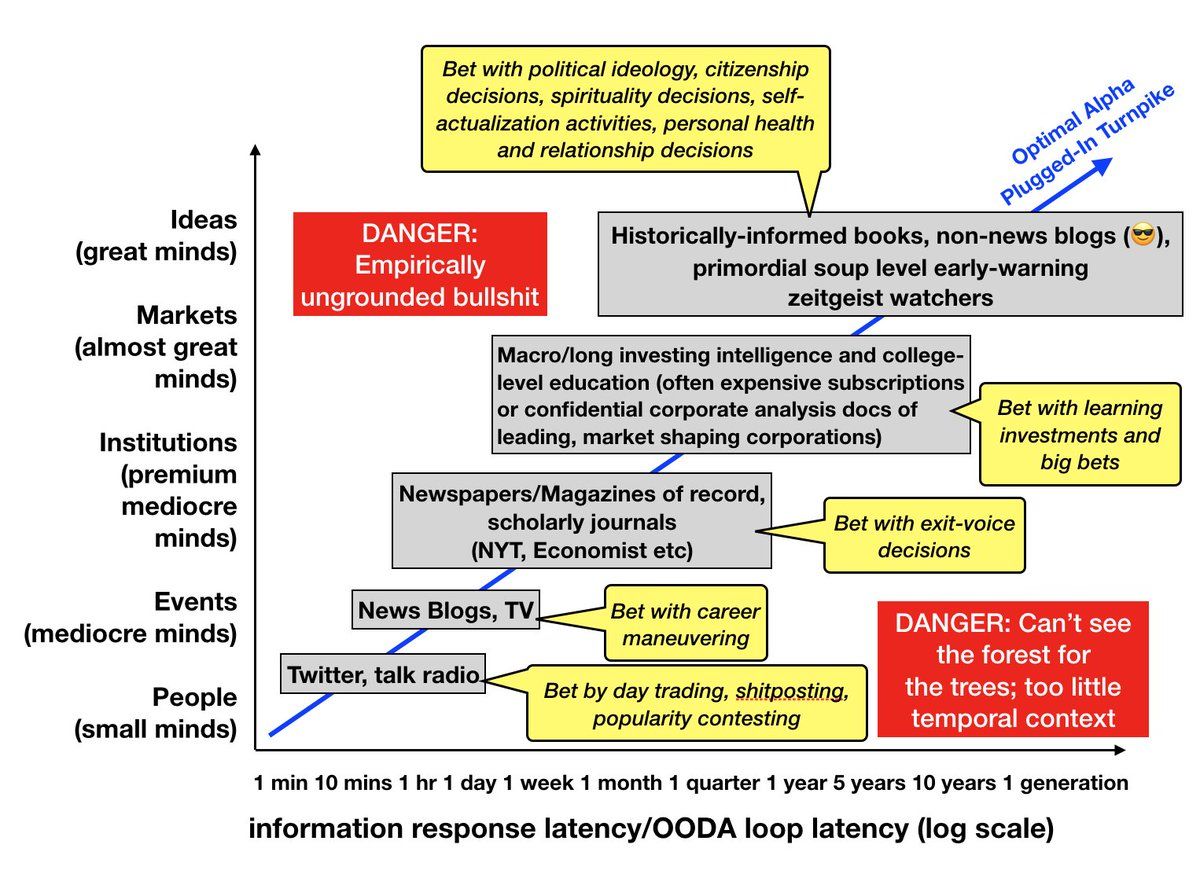Information Response Latency vs Magnitude Trade-off
We can put the input information stream onto 2 axes:
- Response latency
- Order of magnitude
Low Response Latency & Low Order of Magnitude
Today's news, tweets, Instagram, and other sorts of feeds fall somewhere close to zero of the response latency axis. Those things can be actionable today, but they are unlikely to be of any relevance in a few weeks.
Today's news not only has a short response latency window, but most of it also tends to be of no importance.
They fall on the left-lowest end of the Latency/Magnitude axis.
High Response Latency & High Order of Magnitude
On the opposite end of the Latency/Magnitude axis, we've got "great minds" ideas in order of things.
They also tend to be of long-term relevance. Eternal ideas are never aging.

Latency - Magnitude Trade-off
Today's noise does help in the long-term vision.
To build a long-term plan based on the future vision you need an understanding of the big picture. It doesn't come from today's noise produced by a newsfeed and requires a deeper insight into the order of things.
From that standpoint unplugging yourself from the news stream and putting yourself on [[Information Diet]] makes a lot of sense.
Long-term vision doesn't help in today's decisions.
To make short-term decisions you need a low-latency information stream of data that is relevant right today.
Using a higher order of magnitude and higher latency information stream for short-term decisions would decrease their quality and can be harmful in the long term as well.
Comments